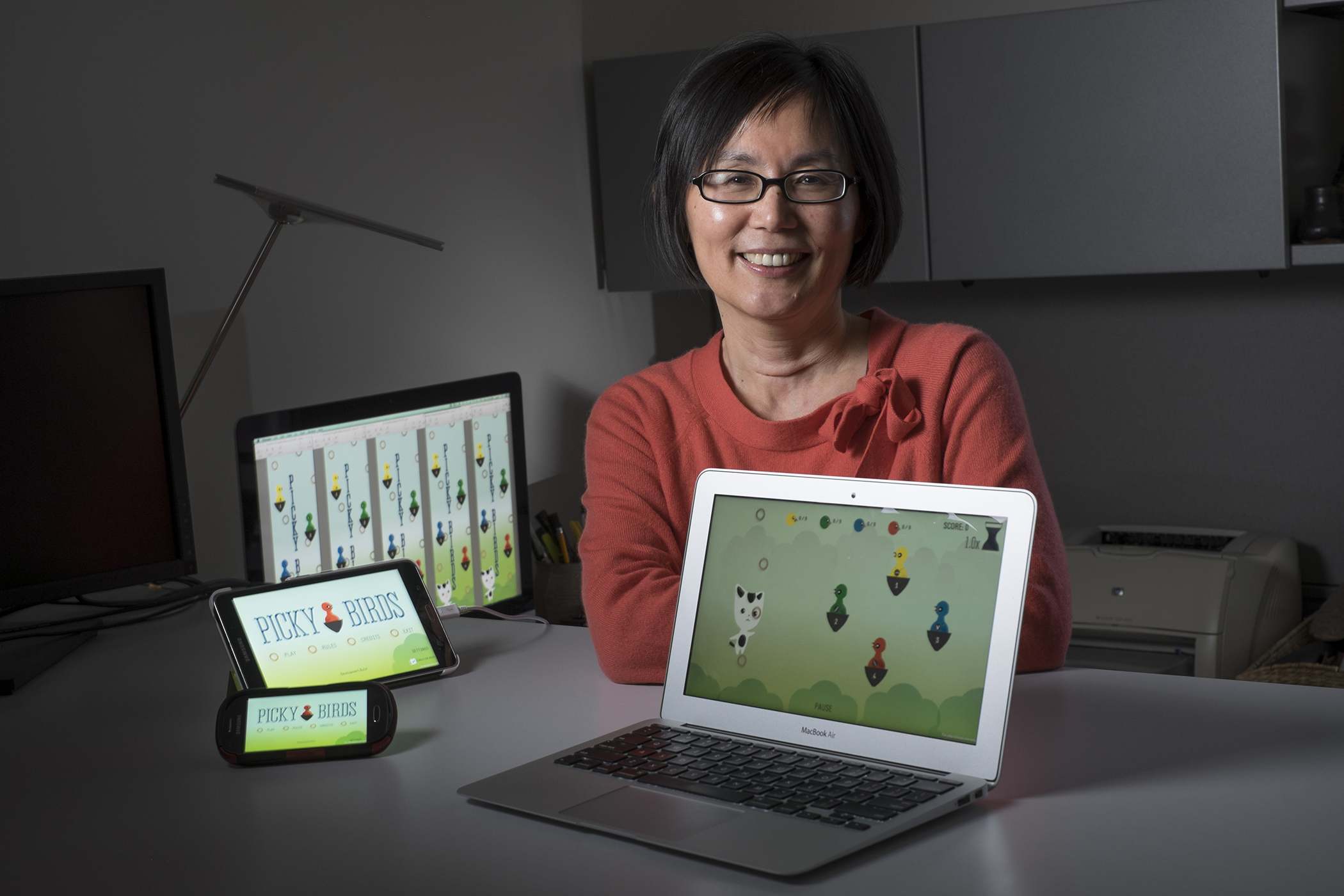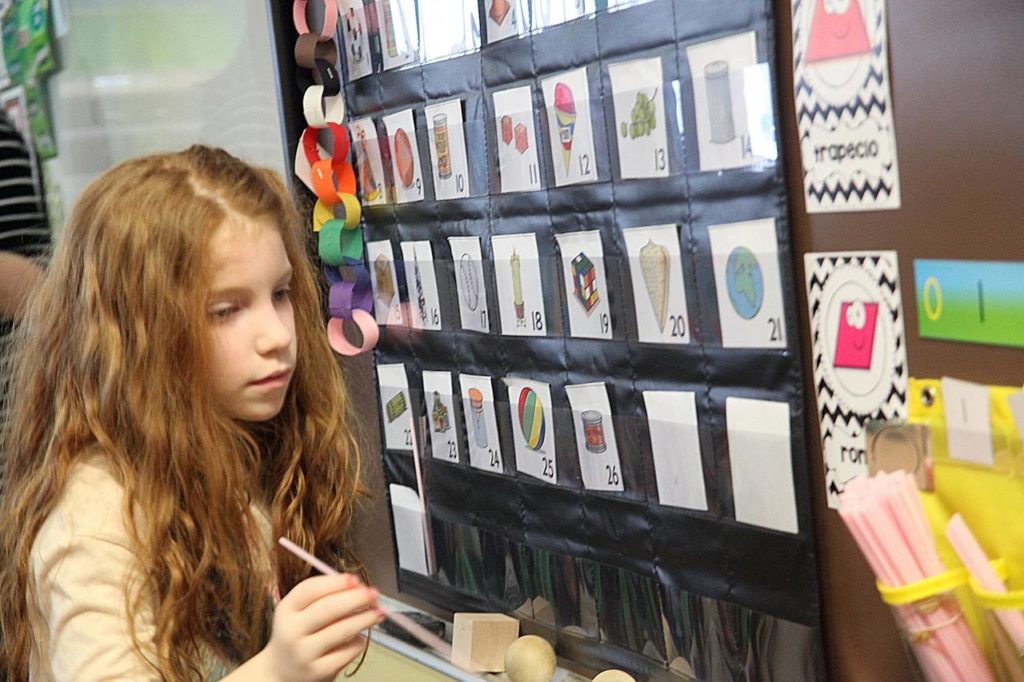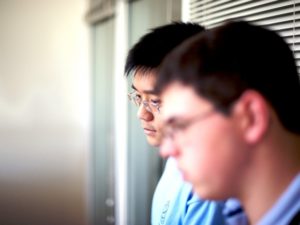Tips for Teens – Oversharing: Think Before You Post
I don’t have teens but social media has crept into the vocabulary of my little girls and I know that they anticipate the day that they will have their own social media passwords that they access on their smart phones while they text, tweet, IG, snapchat, etc with their friends. PAASSC will start posting more information about tips to support your youth on social media and safety devices – as I become more knowledgeable in my efforts to protect my own children.
In the meantime I wanted to share this video with clear messages to youth that encourage responsible use of social media.
Made in collaboration with CommonSense Media and Flocabulary, the experts in educational hip-hop, this animated music video raps about the hazards of oversharing online and emphasizes a thoughtful approach to digital footprints. Tweens, teens, and adults can laugh and learn about the ups and downs of communicating and connecting in the digital world.
Mandarin Movie for Language Learners!!
Pleasant Goat and Big Big Wolf is an entertaining film for your Mandarin language learner. The premise of the movie is that a “bad guy” thwarts the princess and prince from falling in love and getting married. This changes the story books and adults throughout the land are in tears. When 4 little goats have a chance to help the prince rescue his princess they, along with two adult goats, travel in search of the princess. Their journey has many typical obstacles and successes that you would expect in a children’s movie. The animation, songs, action and plot are all enjoyable. English subtitles make it a plus for parent’s to watch with their children. Hope you enjoy.
Pleasant Goat and Big Big Wolf (Chinese: 喜羊羊与灰太狼; pinyin: Xǐ Yáng Yáng yǔ Huī Tài Láng) is a Chinese animated television series created by Huang Weiming, Lin Yuting and Luo Yinggeng, and produced by Creative Power Entertaining. The show is about a group of goats living on the Green Pasture, Qing Qing Grasslands/Plains (Chinese: 青青草原), and the story revolving around a clumsy wolf who wants to eat them. The cartoon became enormously popular with Chinese schoolchildren after its debut in 2005. Cashing in on the cartoon’s success, the producer made an animated feature in 2009.
Th
Learning Mandarin from birds
Scholars of the Mandarin Chinese language can learn a lot from birds.
That’s the premise of a new language learning game designed by a Michigan State University researcher and an interdisciplinary team of students.
Inspired by the varying tones of bird species, Picky Birds teaches students the four main Mandarin tones by helping them associate each tone with a corresponding colored bird, said Catherine Ryu, associate professor of Japanese literature and culture, who recently received a patent for the technology on which the game is based.

Catherine Ryu, associate professor of Japanese literature and culture, has received a patent for the technology behind her language learning game, Picky Birds. Photo by Kurt Stepnitz
“Mandarin Chinese is a tonal language, which means the same word can mean something entirely different depending on the tone used,” Ryu said. “And this is fundamentally different than how we use tonal inflections in English.”
For example, in Mandarin the word “ma” (English sound equivalent) can mean “mother,” “flax,” “horse” or “to yell” depending on the tonal inflection used.
Picky Birds is based on research showing brains are wired to associate high pitches with lighter hues, Ryu said. So the birds in her game are yellow for the high even tone, green for the rising tone, blue for the dipping tone and red for the falling tone.
The app is an outcome of Ryu’s Tone Perception Efficacy Study, which she conducted with Aline Godfroid, assistant professor of second language studies, and Chin-Hsi Lin, assistant professor in the Department of Counseling, Educational Psychology and Special Education. ToPES investigated two related questions regarding language:
• How do people perceive, process and retain tones as a sensory perception, especially when the tones in question are not an integral aspect of their own language backgrounds?
• To what extent can people learn to differentiate tones and retain that information?
Ryu will use Picky Birds next month for a Mandarin tone perception experiment, hoping to recruit 40 students without any prior exposure to Mandarin Chinese to participate.
Once Picky Birds is vetted, Ryu will work with MSU Technologies to market the app to users; they expect to begin commercialization in the fall.
In addition to College of Arts and Letters faculty and students, the Picky Birds team includes media and information majors specializing in game design and development in the College of Communication Arts and Sciences and a computer music composer who teaches at Mott Community College in Flint.
Ryu hopes to expand her research team to include neuroscientists, graphic artists, creative writers, game developers, web developers, mechanical engineers and social media specialists.
“It’s a high-energy group of collaborators,” Ryu said. “When we all get together with linguists, truly exciting conversations take place.”
Development of Picky Birds was supported with funding from MSU’s Office of the Vice President for Research and Graduate Studies under the Targeted Support Grant for Technology Development program.
Dual-Language Classes for Kids Grow in Popularity
In increasingly global economy, more parents seek leg up for their children through early immersion programs

Kindergartener Leah Grunwell counts items in Spanish on a calendar at Parkview Elementary school in Valparaiso, Ind., which has been awarded a grant for dual-language immersion classes. Photo: Tony V. Martin/The Times of Northwest Indiana/Associated Press
Penelope Spain is desperate to make her 3-year-old son fluent in a second language.
Last year, the Washington, D.C., attorney competed with hundreds of other parents for a spot at several prekindergarten programs that teach lessons partly or mostly in Spanish. She struck out. “I sat on the couch and just cried endlessly,” she recalled. Now she has widened her search to French and Mandarin schools.
Public schools that immerse students in a second language have become hot destinations for parents seeking a leg up for their children in a global economy. New York, Utah, Delaware and other states are adding classrooms where at least half of lessons are taught in a second tongue.
Many of these programs started as a way to ease students from immigrant households into U.S. classrooms. Instead, they are attracting droves of native English-speaking families who bet that top jobs will increasingly demand bilingual skills thanks to foreign trade and a growing Latino population in the U.S. Programs that immerse students in Spanish, Mandarin and Arabic are seeing heavy interest starting in preschool.
“If you have another language, it opens up so many more opportunities for your career,” said Ms. Spain, who is non-Hispanic white.
Delaware’s governor is pouring $1.9 million a year into more than tripling the number of students in dual-language school programs for Spanish and Mandarin, with the goal of having 10,000 students in these classrooms by 2022. Utah’s 138 language immersion programs have seen such high demand that the state surpassed its target of enrolling 30,000 students a year ahead of schedule in 2014.
“In most parts of the county, it’s something parents are demanding,” says Marty Abbott, executive director of the American Council on the Teaching of Foreign Languages. She calls people like Ms. Spain “language moms.”
Some programs have sparked a backlash. When Houston’s public school district opened an Arabic dual-language school in August, about 30 protesters camped outside, waving American flags and anti-Muslim signs. “There’s some level of fear about it,” said Kate Adams, principal of the Arabic Immersion Magnet School in Houston.
The school district started the program in part because Houston’s energy industry attracts a sizable number of Middle Eastern workers. Yet in its inaugural class this fall, only about 10% of students came from households that spoke Arabic, Ms. Adams said. Many of the rest—a mix of white, black and Latino pupils—have parents who see broad educational benefits in learning a second language early in life. About three students applied for each open spot at the school, where half of all lessons are taught in Arabic.
Parents are being attracted by research suggesting that students gain mental flexibility when they learn a language early in life instead of waiting until high school. In a multiyear study starting in 2007, George Mason University emeritus professors Wayne Thomas and Virginia Collier looked at native and nonnative English-speaking students mixed together in classrooms where teachers taught in both English and a second language. They found that all students scored higher in reading and math than students in non dual-language classrooms, regardless of their ethnicity or socioeconomic status.
“The way the kids think and analyze is more robust than a monolingual school,” said Melody Meade, primary school principal at the Washington International School, a private D.C. immersion school.
In the District of Columbia, dual-language programs have helped turn some once-struggling public schools into attractive destinations. Tyler Elementary School, located just over a mile east of the U.S. Capitol Building, was placed on the district’s list of its 40 worst-performing schools four years ago.
But its Spanish dual-language program, coupled with a desirable location and overall improvements in district public schools, has created such heavy demand that more than 300 students are on a wait list for spots there this school year.

Spanish instructor Kristin Nguyen teaches a class at Parkview Elementary School. Dual-language classes are attracting native English-speaking families who bet that top jobs will increasingly demand bilingual skills thanks to foreign trade and a growing Latino population in the U.S. Photo: Tony V. Martin/The Times of Northwest Indiana/Associated Press
On a recent afternoon at Tyler, not a word of English was spoken as kindergarten teacher Laura Chapa walked students through a math lesson, counting from one to 11 as she pulled colored chips out of a bag. A sign labeled the class library as a “biblioteca,” including sections for books about “familia” and “animales.”
Tyler’s mostly black student body has diversified to include more white, Latino and Asian students drawn to the dual-language program. “It’s been a win-win for the school,” says Principal Mitchell Brunson. The district’s public school system plans to add three new dual-language programs this coming school year, and D.C. parents have formed an advocacy group to push for more.
“They’re not schools that middle-class people would be attracted to if you just looked at test scores and demographics and condition of the building,” said E.V. Downey, a Washington educational consultant. “They would generally speaking be a no-go, and yet they’re of great interest because of the immersion programs.”
The Road to Equity is Paved with Emotions
PAASSC is hosting a series of workshops for local Bay Area administrators addressing Equity and Inclusion at Chinese Immersion school sites. When we deal with issues of equity and inclusion in the US we are often looking at issues impacting white and non-white communities. The issues that we are beginning to address through our workshops involve how issues of privilege present themselves in a non-white setting.
As we are working through this with our administrators we wanted to share the article below as one of many first steps schools, parents, and students can utilize to move towards creating equitable classrooms for all students.
__________________________

Photo credit: marco antonio torres via flickr
In order to build equitable schools, we’ll need to have some really hard conversations. We’ll have to talk about racism and slavery, about privilege and class, and about sexism and patriarchy. We’ll have to talk about our own experiences as kids in school and about our own biases and misconceptions.
There’s no way we have these conversations without experiencing emotions. And there’s no way we can transform our schools without having these conversations. The road to equity is paved with emotions.
Along this road, many people will experience strong emotions, including anger, rage, grief, shame, and fear. We’ll experience these emotions personally, and we’ll be with others who are experiencing them because we’ll need to have these conversations with colleagues, our students, and their families. And so, we’ll need approaches to recognize emotions in ourselves and in others, and we’ll need some ways to respond to these emotions.
Emotional Literacy Is Essential
Many are familiar with the term emotional intelligence, a term used to describe a set of emotional awareness and management skills. Emotional intelligence, in leading expert Daniel Goleman’s definition, is how we recognize and manage our own emotions, as well as those of others.
I’m unsettled by the term emotional intelligence because of current and historical connotations of the word intelligence. I know I’m not alone in my discomfort. For this reason, I’m starting to use emotional literacy in its place, a term that implies a skill and knowledge set that can be expanded.
In order to build equitable schools, we must acquire a vast set of emotional literacy skills. We must learn to recognize our emotions when we’re experiencing them, and we must acquire some strategies for mindfully experiencing them.
I’m also moving away from using the term management to describe how we relate to our feelings. Management connotes control and suppression — and controlling emotions isn’t going to get us where we need to go. We can learn to experience emotions mindfully and in ways that are healthy and that don’t produce unintended consequences.
Emotions as a Source of Power
For over two decades, I have offered my contributions to build equitable schools — to transform the experiences and outcomes of children, especially children who have been underserved in our schools. I know there are many of us engaged in interrupting the opportunity (“achievement”) gap, curtailing the school-to-prison pipeline, and ensuring that English learners, students with learning differences, and children from low-income families graduate from high school.
Many of us have honed skills such as culturally responsive teaching. Many of us have engaged in reflection on how our social and cultural identities influence how we do our work. Those of us doing this challenging work of dismantling inequitable practices and structures, and building the schools our kids need and deserve, will need to explore and expand another knowledge and skill domain — the domain of emotions.
I believe we aren’t going to create truly transformed schools that have interrupted systemic oppression unless we talk about feelings.
Experience Your Emotions Mindfully
I have spent many years avoiding emotions. There’s so much to do, and so little time, and emotions have seemed like annoyances that obstruct the real work. And yet, as much as I’ve tried, I can’t avoid them — not personally and not professionally. In teams, and between individuals, and within myself, emotions keep percolating up.
Now, I’m starting to see them as a source of energy, as an essential element on the road to transformation. When I notice them surfacing in myself and in others, I don’t push them away or avoid them, I don’t try to suppress them. I greet them. I’m getting curious and finding out that emotions are not that scary and that I can access them in a way that gives me strength, courage, and power.
I’m also finding that when I give them some time and attention, they respectfully move to the side and allow me to keep getting the hard work done. There’s enough space in my mind, heart, and life for feelings, and there’s no way to avoid them if I want to build equitable schools.
What are your thoughts and ideas on this post? Please share in the comments section below.

Photo credit: marco antonio torres via flickr


